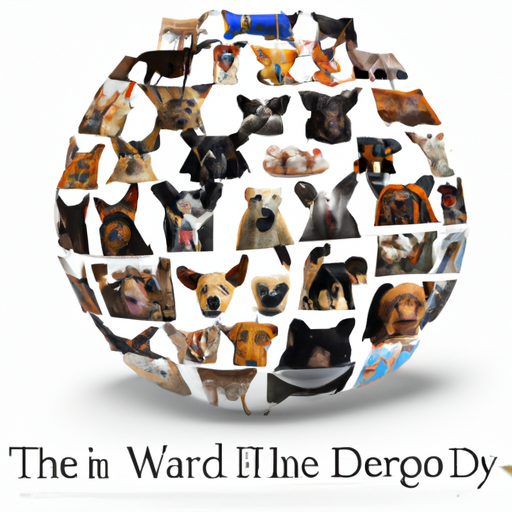Introduction
You’ve likely found yourself gazing at the countless faces of dogs, both big and small, long-haired and short-haired, athletic and lazy, and wondered, “Just how many different breeds of dogs are there?” As a caregiver, you know that every breed has its own unique traits and needs, making this question not just one of simple curiosity, but of practical importance too.
The World According to Kennel Clubs
Let’s start by looking at the figures provided by the major kennel clubs worldwide.
- The American Kennel Club (AKC) recognizes 197 breeds
- The United Kennel Club (UKC) in the U.S. recognizes over 300 breeds
- The Kennel Club (KC) in the U.K. recognizes 211 breeds
- The Fédération Cynologique Internationale (FCI), based in Belgium and recognized globally, acknowledges 360 officially recognized breeds
| Kennel Club | Number of Recognized Breeds |
|---|---|
| AKC | 197 |
| UKC | 300+ |
| KC | 211 |
| FCI | 360 |
The Canine Rainbow: A Look at Variety
Dogs come in a dizzying array of shapes, sizes, and colors. From the tiny Chihuahua to the towering Great Dane, from the slender Greyhound to the robust Bulldog, you’d be forgiven for thinking there are countless breeds. However, the genetic difference between dog breeds is actually quite small, making the sheer physical variety all the more remarkable.
The Role of Breeds in Dog Care
Understanding the breed of a dog is crucial when it comes to providing the best care, as you well know. Different breeds have different needs in terms of diet, exercise, health screening, and even affection. For instance, a Border Collie will need a lot of mental and physical stimulation, while a Basset Hound will be content with a few short walks and plenty of couch time.
- Diet: Some breeds may need specific nutrients in their diet to support their health and well-being.
- Exercise: The exercise needs greatly vary from one breed to another.
- Health Screening: Certain breeds are more prone to specific diseases and health conditions.
- Affection: Some breeds require more human interaction and affection than others.
The Many Faces of Dogs: An Overview of Notable Breeds
While it’s impossible to cover every breed in depth, here are some notable breeds that you may encounter.
- Labrador Retriever: Known for their friendly and tolerant attitudes, they make great family dogs.
- German Shepherd: They are highly intelligent and versatile, often used in police and service work.
- Beagle: These are curious and merry dogs, known for their great sense of smell.
- Bulldog: Despite their somewhat fierce appearance, Bulldogs are known to be gentle and friendly.
- Poodle: They are often recognized for their distinctive haircuts, but they’re also highly intelligent and trainable.
FAQ
Q: Is there a definitive number of dog breeds?
A: The number of recognized dog breeds varies between different kennel clubs, and new breeds are recognized every year.
Q: Why does the number of breeds differ between kennel clubs?
A: Different kennel clubs have different criteria for recognizing a breed.
Q: Can mixed breed dogs be healthier than purebred dogs?
A: It’s a common belief that mixed breed dogs are healthier due to a larger gene pool, but it really depends on the specific dogs in question.
Q: Is a dog’s behavior determined by its breed?
A: While a dog’s breed can influence its behavior, training and socialization also play significant roles.



